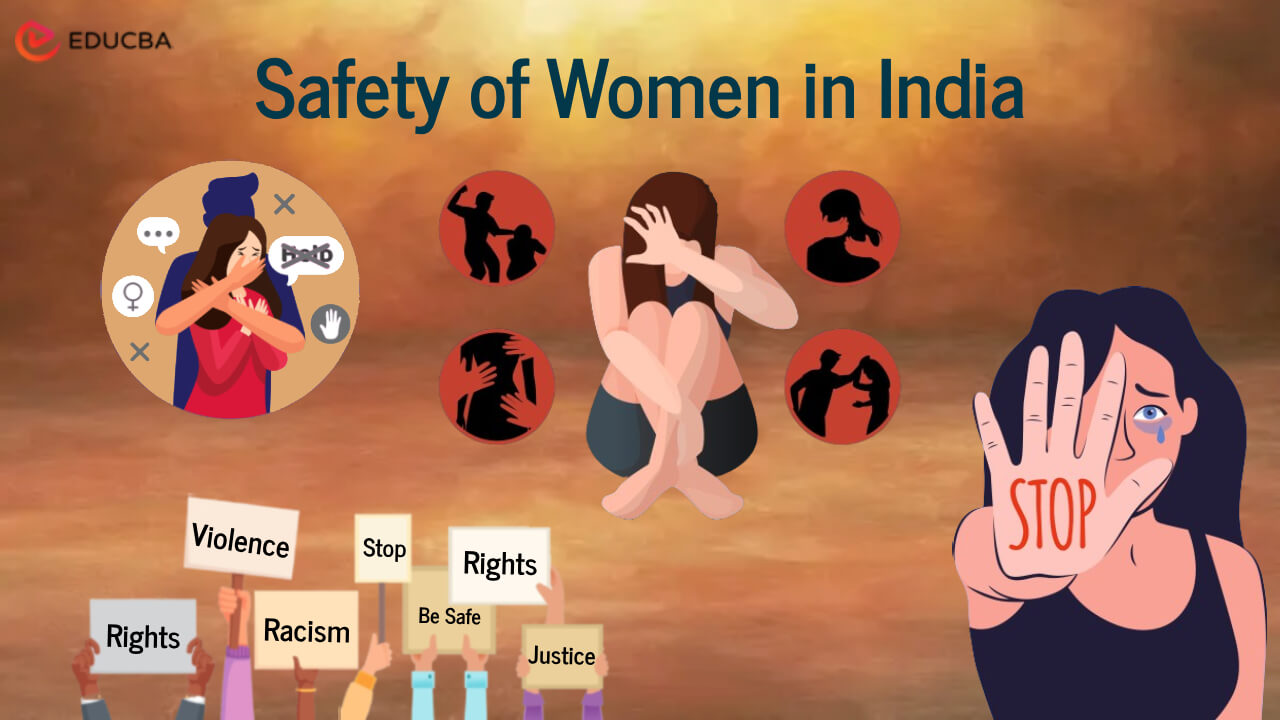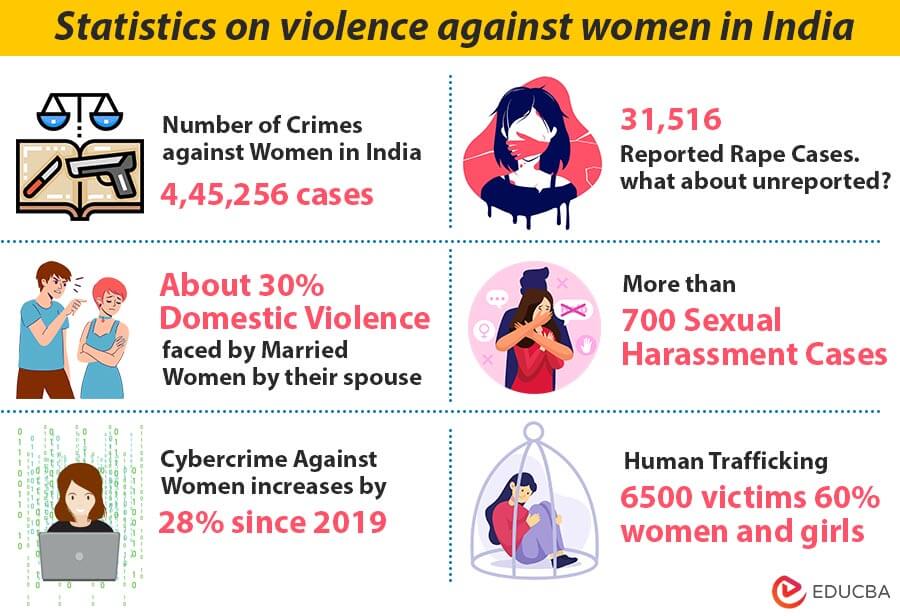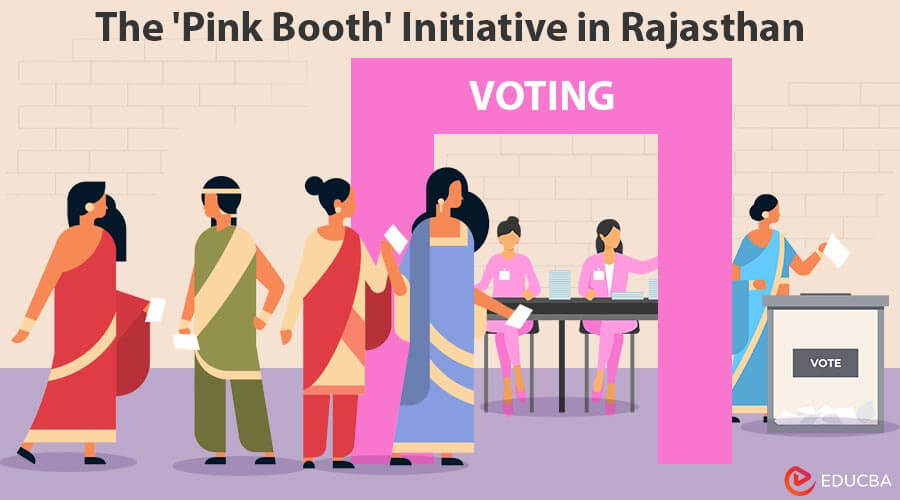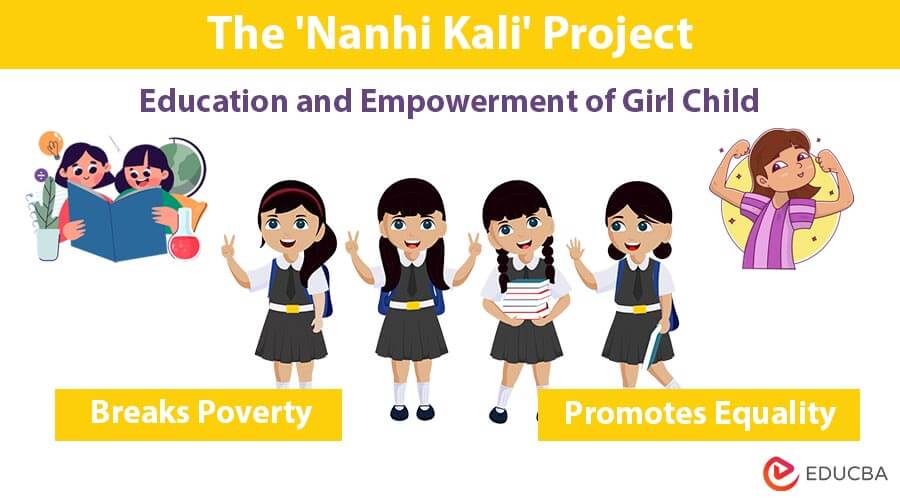A Call to Action – Safety of Women
In India, ensuring the safety of women is a pressing societal concern. Despite some progress, significant challenges still need to be addressed. Deep-seated cultural norms, in combination with alarming rates of gender-based violence, highlight the seriousness of the issue. A comprehensive approach is required, which considers the legal, societal, and cultural aspects of the problem. Ensuring women’s safety is a necessity and a fundamental right that is crucial for India’s all-inclusive development.
Nirbhaya
A name that echoed through the corridors of every household in India, a chilling reminder of a threat that could not be ignored. An entire country felt goosebumps at the mere thought of it. This was not just a case; it was a haunting narrative that had etched its way into the national consciousness, an indelible stain on the fabric of society that could not be overlooked or dismissed. The case, which had become synonymous with fear and outrage, demanded attention, justice, and a reckoning with the harsh realities lurking within the shadows of every home.
The name ‘Nirbhaya’ may have etched itself indelibly into our collective memory, but it is not alone. Behind it lies a tapestry of untold stories, each representing a silent cry for justice, a stark testament to a threat that transcends the confines of individual tragedies. Rohtak Sisters’ Case (2014), Mathura Rape Case (1972), Bhanwari Devi Case (1992), Shakti Mills Gang Rape Cases (2013) These cases, united by a common thread of anguish, demand a closer look into the broader crisis of women’s safety in India.
The Roots of Gender-Based Violence
Gender-based violence in India has its historical roots in deeply rooted cultural, social, and economic structures that have defined the nation over many centuries.
- Patriarchal Traditions: India has a history of patriarchal traditions passed down through generations. These traditions often emphasized the primacy of male authority within the family and society, relegating women to subordinate roles. In many ancient texts and scriptures, there are instances where women were depicted as submissive and subservient, reinforcing the unequal power dynamics.
- Caste System and Discrimination: The caste system, prevalent for centuries, has contributed to social hierarchies and discrimination. Women from marginalized castes and communities often face compounded vulnerabilities, making them more susceptible to violence. Intersectionality plays a crucial role, as women at the intersection of gender and caste often experience a unique set of challenges and oppressions.
- Arranged Marriages and Dowry System: Traditional practices like arranged marriages and the dowry system have, at times, perpetuated violence against women. The expectation of dowry, for instance, can lead to financial disputes, harassment, and even dowry-related violence.
- Colonial Influence: The colonial period in India also played a role in shaping societal norms. Victorian-era values and laws were imposed, influencing attitudes towards women and sexuality. Some argue that this period further entrenched conservative attitudes.
- Limited Educational Opportunities: Historically, women had limited access to education. This lack of education perpetuated gender stereotypes and restricted women’s ability to challenge traditional norms. Empowering women through education has been a slow and ongoing process.
- Sati and Social Stigmas: Practices like Sati, where widows were expected to self-immolate upon their husband’s death, reflected extreme gender-based violence. While outlawed in the 19th century, remnants of such practices and associated social stigmas endured.
Statistics on violence against women in India
- Crime Against Women in India: The National Crime Records Bureau (NCRB) states that the total number of crimes against women is 4,45,256. Cases under the category of “crime against women” include crimes like rape, kidnapping and abduction, dowry deaths, cruelty by the husband or his relatives, and more.
- Rape Cases: Reported cases of rape 31,516. It’s important to note that rape is often underreported due to social stigma and other factors.
- Domestic Violence (NFHS-5): About 30% of women between the ages of fifteen and forty-nine who have ever been married report having been physically, sexually, or emotionally abused by their spouses, according to the National Family Health Survey (NFHS-5).
- Sexual Harassment: Incidents of sexual harassment, especially in public spaces, are widespread. These cases go unreported due to fear, social pressure, or lack of trust in law enforcement.
- Cybercrime Against Women: With the increased use of technology, cyberbullying and online harassment have become prevalent. However, specific statistics may vary and are often challenging to capture accurately.
- Human Trafficking: India is a country that is used as a transit, destination, and source for human trafficking. Particularly susceptible to being trafficked for different types of exploitation are women and children.
Government Initiatives
Here are explanations of some significant government initiatives aimed at addressing issues related to the safety and empowerment of women in India:
1. Beti Bachao, Beti Padhao (Save the Daughter, Educate the Daughter):
- Launched in 2015, this campaign focuses on addressing the declining child sex ratio and promoting the education and empowerment of girls.
- It aims to combat gender-biased sex selection, ensure the survival and protection of the girl child, and encourage her education.
2. One Stop Centre (OSC) Scheme:
- OSCs, which were founded in 2015 under the Nirbhaya Fund, offer comprehensive support and aid to women who have experienced various forms of violence, such as sexual assault, domestic abuse, and human trafficking.
- These centers offer medical, legal, psychological, and counseling support in a safe and confidential environment.
3. Women Helpline (181):
- The 181 helpline provides round-the-clock emergency assistance to women in distress.
- It offers immediate support, counseling, and referral services for various issues such as domestic violence, harassment, and crisis intervention.
4. Mahila Police Volunteers (MPVs):
- Launched as a community policing initiative, MPVs link the police and the community to address women’s safety and security issues.
- They assist in creating awareness, reporting crimes against women, and facilitating access to support services.
5. Pradhan Mantri Matru Vandana Yojana (PMMVY):
- This maternity benefit program provides financial assistance to pregnant and lactating women for their first living child.
- It aims to compensate for wage loss and ensure proper nutrition during pregnancy and lactation, reducing maternal and infant mortality rates.
6. National Mission for Empowerment of Women (NMEW):
- The NMEW was launched to empower women by ensuring the convergence of schemes and programs for holistic development.
- It focuses on gender mainstreaming, economic empowerment, health and nutrition, education, and addressing violence against women.
7. Ujjawala Scheme:
- This initiative aims to rescue and rehabilitate women and girls trafficked for commercial sexual exploitation.
- It provides them shelter, counseling, vocational training, and support for reintegration into society.
8. Swadhar Greh Scheme:
- Swadhar Greh shelters provide temporary accommodation, support, and rehabilitation services to women in difficult circumstances, such as those facing violence, trafficking, or abandonment.
- It assists women in gaining skills for economic self-sufficiency and independent living.
Factors Contributing to an Unsafe Environment
Here are several factors contributing to an unsafe environment for women in India, each outlined in separate paragraphs:
- Cultural Norms and Gender Biases
India’s deep-rooted cultural norms often perpetuate gender biases and stereotypes that disadvantage women. Patriarchal traditions and societal expectations often limit women’s autonomy, restrict their mobility, and reinforce discriminatory attitudes. There is a lack of regard for women’s rights and safety in this society because of these deeply ingrained attitudes that view women as inferior to men.
- Inadequate Law Enforcement and Legal Frameworks
While laws and regulations exist to protect women, their practical implementation often falls short. Inadequate law enforcement, slow judicial processes, and societal biases within the legal system hinder justice for victims of gender-based violence. The gap between legal provisions and their practical enforcement leaves many women vulnerable to exploitation and abuse.
- Socioeconomic Disparities and Lack of Education
Economic and educational disparities play a pivotal role in exacerbating the vulnerability of women. Insufficient educational options, especially in rural regions, hinder people’s knowledge of their rights and opportunities. Economic dependency and lack of financial independence often leave women at the mercy of societal structures, making them more susceptible to exploitation and abuse.
- Urban-Rural Divide and Safety Concerns
The disparity in safety measures between urban and rural areas presents a stark contrast. While urban centers may have better access to law enforcement and support systems, rural regions often lack adequate infrastructure and resources. Women in rural areas face heightened risks due to poor lighting, inadequate transport facilities, and a lack of accessible emergency services.
- Technology and Cybersecurity Risks
The proliferation of technology, while a boon in many ways, has introduced new challenges to women’s safety. Cyber harassment, online stalking, and the misuse of social media platforms pose significant threats to women. The anonymity of the online world often emboldens perpetrators, creating a pervasive atmosphere of fear and insecurity.
- Deep-Seated Societal Attitudes and Stigmatization
Stigmatization and victim-blaming attitudes prevalent in society deter women from reporting incidents of harassment or violence. Fear of social repercussions, ostracization, or shaming prevents many women from seeking help or justice, perpetuating a culture of silence around such issues.
Solutions and Recommendations
1. Strengthening Legal Frameworks and Enforcement
- Stringent Laws: Ensure strict laws and amendments to cover a wide spectrum of gender-based violence and harassment.
- Swift Justice: Fast-track courts and dedicated prosecution units for timely resolution of cases.
- Increased Awareness: Educate citizens about legal provisions and the importance of reporting crimes.
2. Empowerment through Education and Awareness
- Comprehensive Education: Incorporate gender sensitization and awareness programs into school curricula and adult education initiatives.
- Community Engagement: Conduct workshops, seminars, and community discussions to challenge stereotypes and promote gender equality.
- Media Campaigns: Utilize media platforms to disseminate information, challenge stereotypes, and promote positive representations of women.
3. Creating Safe Physical Spaces
- Infrastructure Improvement: Improve lighting, transportation, and public infrastructure to enhance safety, particularly in rural and urban peripheries.
- Community Policing: Encourage and support community policing initiatives for increased surveillance and rapid response.
4. Technological Solutions for Safety
- Safety Apps and Helplines: Develop and promote mobile applications and helplines for emergency assistance and reporting.
- CCTV Surveillance: Implement CCTV cameras in strategic public locations to deter crimes and aid in investigations.
5. Support Systems and Rehabilitation
- Victim Support Centers: Establish dedicated centers providing counseling, legal aid, and rehabilitation services for survivors of gender-based violence.
- Shelters and Safe Spaces: Ensure adequate shelters and safe spaces for women in distress, especially for those escaping domestic abuse.
6. Economic and Social Empowerment
- Financial Independence: Encourage economic empowerment through skill-building, entrepreneurship, and employment opportunities for women.
- Political Participation: Promote women’s participation in decision-making processes at local and national levels.
7. Strengthening Institutional Response
- Workplace Policies: Implement and strictly enforce workplace policies against harassment, ensuring a safe and supportive work environment.
- Police Sensitization: Provide specialized training to law enforcement officials to handle cases empathetically and efficiently.
8. Collaborative Approach
- Government and NGO Collaboration: To maximize resources and efforts, Foster partnerships between government bodies, NGOs, and community organizations.
- Research and Data Collection: Conduct comprehensive research and gather data to understand trends, assess impact, and tailor interventions effectively.
9. Inclusivity and Intersectionality
- Addressing Intersectionality: Recognize and address the unique challenges women face from marginalized communities, considering factors like caste, religion, and socioeconomic status.
- Inclusive Policies: Formulate policies that account for diverse perspectives and ensure equal protection for all women.
10. Continuous Evaluation and Adaptation
- Regular Audits: Conduct periodic safety audits and evaluations of implemented measures to assess effectiveness.
- Feedback Mechanisms: Establish mechanisms for feedback from communities, victims, and stakeholders to refine and adapt safety initiatives based on real-time needs.
Case Studies
Here are some case studies and success stories that highlight positive outcomes in improving women’s safety:
1. Uber’s Safety Features in India:
- Background: In response to concerns about women’s safety using ride-sharing services, Uber implemented several safety features in India.
- Success Story: Introducing features like real-time ride tracking, in-app emergency buttons, and driver background checks significantly enhanced women’s safety using the platform. This initiative demonstrated how technology and proactive measures can contribute to a safer transportation environment.
2. The ‘Pink Booth’ Initiative in Rajasthan:
- Background: Rajasthan launched the ‘Pink Booth’ initiative, aiming to increase the participation of women in local elections by providing a safe and secure space for them to cast their votes.
- Success Story: The introduction of pink-colored polling booths, exclusively managed by female staff, encouraged more women to participate in the electoral process. This initiative increased women’s political participation and set an example for creating inclusive and secure public spaces.
3. Mumbai Police’s ‘She Teams’:
- Background: Mumbai Police introduced ‘She Teams’ to address the issue of harassment in public places.
- Success Story: The teams, consisting of female police officers, patrol crowded areas and public spaces. This visible police presence has reduced harassment, creating a safer environment for women in the city.
4. The ‘Nanhi Kali’ Project:
- Background: The ‘Nanhi Kali’ project, run by the Naandi Foundation, focuses on the education and empowerment of girl children, especially in rural areas.
- Success Story: By providing access to quality education, the project has not only empowered young girls but has also contributed to breaking the cycle of poverty and inequality. This success story emphasizes the transformative impact of education on women’s lives.
5. Gulabi Gang – Women Empowering Women:
- Background: The Gulabi Gang, founded by Sampat Pal Devi in Uttar Pradesh, is a group of women who actively work to address issues like domestic violence and injustice against women.
- Success Story: The Gulabi Gang’s activism has led to the exposure of corrupt practices, the rescue of women facing abuse, and advocacy for women’s rights. Their grassroots efforts showcase the power of collective action in challenging systemic issues.
6. The ‘Selfie with Daughter’ Campaign:
- Background: The ‘Selfie with Daughter’ campaign, initiated in Haryana, encourages fathers to take selfies with their daughters, promoting the idea that daughters are a source of pride and joy.
- Success Story: The campaign has helped shift perceptions about the value of girl children and has contributed to changing mindsets, fostering a more supportive environment for girls in the community.
Conclusion
While challenges persist, the journey toward ensuring women’s safety in India is marked by transformative initiatives and inspiring successes. These stories, from technological advancements to grassroots movements, demonstrate the potential for positive change. A collective commitment is needed to create a safer future, combining legal reforms, societal awareness, and community engagement. As these endeavors continue, India has the opportunity to build a society where every woman can live free from fear and enjoy her rightful place in all aspects of life.







